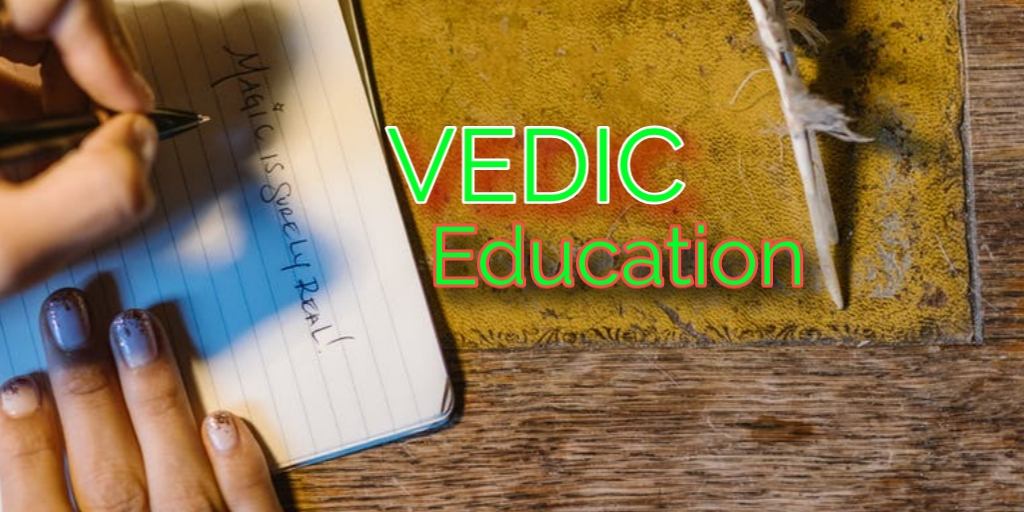Introduction:-
Table of Contents
When the entire world was in darkness the knowledge of the sun had raise on the horizon of Aryabhata, the rays illumined by the entire land and the world later. From that period education grow up. From that period of time, education has to meet the new demands of society. An epoch-making event in the history of India’s system of education at the beginning of culture, literature, and science during the Vedic period. According to social need education gradually changing. If we study the educational history of India. it can be divided into three parts Theas are – What is Vedic Education
(1) Ancient Period
(2) Medival Period
(3) Modern Period
very true it is that education is the keyfactor of the society. By the change of social needs education also modified. The change in the social pattern also influence change in the purpose. Thearfore the history of education in ancient india can be devided into three period brodely term as vedic period, post vedic period and Buddhist period.
Period of vedic :-
The vedas have laid the foundation upon which the entire the Hindu culture and civilization has been building up in the vedic period. Education was open to the people of three class called Brahmana, Kshatriyass, vaishya and only one called name shudra was however devided from the main stream of education. Pupil used to live with the teacher as the member of his family and all of them constituded the school or Ashram. The pupils were infused with the values and meathods of teaching and were embinding the spirit with the close contact of the teacher. The tracher like and work was burning. example of and living model for the student.

Etyomologicale meaning of vedic period :-
In ancient Indian literature of Vedic period the words Siksha and Adhyapana frequently occure. Siksha means to learn, to recite, in that time education considered of learning to recite holy text. The word Adhyapana which literally means ” to go near ” that implies the idea of pupils going to some teacher form education.
The ancient indian education emerged from the vadas, Because the vedas are the sources of Indian philosophy of life. Vedas means knowledge during that period education is to devided into two kind of knowledge. Theas are one is wordely and other is other wordely. This wordely education deals with social aspect where as other wordly education was related to intellectual persuits for achieving salvation. Thus education was considered as the means of emancipation from lifr bondage.
System of admission :-
The admission to the vedic centers learning was beautifully transacted an iniciation ceremoney related to spiritual and religious persuits of people. Moksha related to spiritual ambition to be relised and meta-physical wealth of religious activities. It was particularly the ultimate end of the spritual life of the ancient indias . At the time of admission student were faced the ceremony which is called “upanayana sanskar” After that the child rere readly to get education . In below i point some basic principle which is best for reliable to admisssion in education.
i- The system of admission to the vedic centres started after upanayana sanskara.
ii- Learning during the vadic period was based on Gurukula Ashrama so that the child desire of receiving eduaction of his chosen preceptor.
iii- All children are allowed,admission goes on certain time period.
iv- After admission the child is converted to a Brahmachari to pursue education activities observing certain strict principle.
v- In vedic period the system admission on certain time period.
vi- In vedic system of education, the complition education of students was different according to their cast.

System of Education :-
At the early stage the demand for the education among the people was no so promenent. The system of education which was prevalentwas all to gather different from what is today. In that times the student started the recifation of the vedic hymns in early hours of morning befor the birds announce the day break. In that times the teaching in a way was oral. The vedic knowledge was important by the Guru or teacher to the pupil through regulated and prescribe pronounciation which the pupil wpold committee to memory, having listen to it ulternativily.
The vadic hymns regulated as instincts with certain mystical power. This mystical power creat the meditation among the pupil. The language of vadic hymns evolved out of the populer dialect. Thise was the elementary form of the sanskrite. Thuse, the great seers of the absolute truth called the Rishis having realised that knowledge through yoga reveal it in the vadic language. Even in modern time in india we hear of argument in favour of imparting university education only to the meririous few while less gifted ones to be sent verious evocation in life after metriculation.
Main Characteristics :-
Some special characteristic of education system may be summed up as below.
i- The home of the precepter served as the institution , where the pupil lives after the ” upanayana ceremony”. The teacher would in the place of the father, discharge the duty of guardian who shouldarate the responsibilities of the words maintance.
ii- The pupil was eligible to admission to the proceptor house only the basic of his moral fitness.
iii- The discipline Brahmanchariya or celebracy was compulosory.
iv- It was one of the secred duties of the pupil to serve his preception as being a resideneal pupil, he would look to the comfort of his Guru. He pleadge devetion to guru in through. Speech and deep and worshipped him as his own father in god.
v- Pupil who neglected their duties towards the perception their were debbarred from education expelled from the institution.
Aims of Curriculum :-
The begining of education was marked by the ” upanayana ceremony ” which was generally performed at a presiribed age level. The age limit was verying from caste to caste . It was eight year, eleventh year, twelveth year respectively for Brahmins , Khatriyas and vaishyas generally the studentship lasted for 12 year.
i- Prevalent system :
The prevalent system of education was not merely theoritical. The prevalent system was related to realities of life, generally various branches of learning were involve in the curriculum. In the process of learning emphasis was laid on proper pronunciation and grammar and also give emphasis on theoretical aspect and practical aspect. In the curriculum both theoretical aspect and practical aspect co-related with each-other. By the process of teaching-learning attempt was made to prepair the child for truthful and to mould the society accordingly.
ii- Social development :
It that time pupil residence house was gurukul. The teacher or Guru help the pupil development concept in Gurukula the student maintain their life very hard and pupiles to prepair to collect fuel, wood, supply water and other house hold odd job for the teacher. In this process the pupils learn to maintain the domenstic life.
iii- Development the humanitarian virtue :
In that time pupil were reading in the house of the Guru . The guru prepare the child for being aims, which was prepair the child for nobal sentiment of humanities virtues. The motive behind the system was to sublimate the unruly passions and go in the pupils, which enables the pupils to face the realities of life and help in social intigious instruction was given much important and religious permit the whole scene of education. Through the essentially spiritual and religious in character. Yet it didnot ignore the material aspect.
Objectives of Vedic Education :-
The object of Vedic education was the development of the physical, moral, and intellectual power of man and to achieve salvation through it. Generally, education was considered to summon bonum of life those, the aim of education was to realish the ultimate truth through religious and spiritual pursuits.


